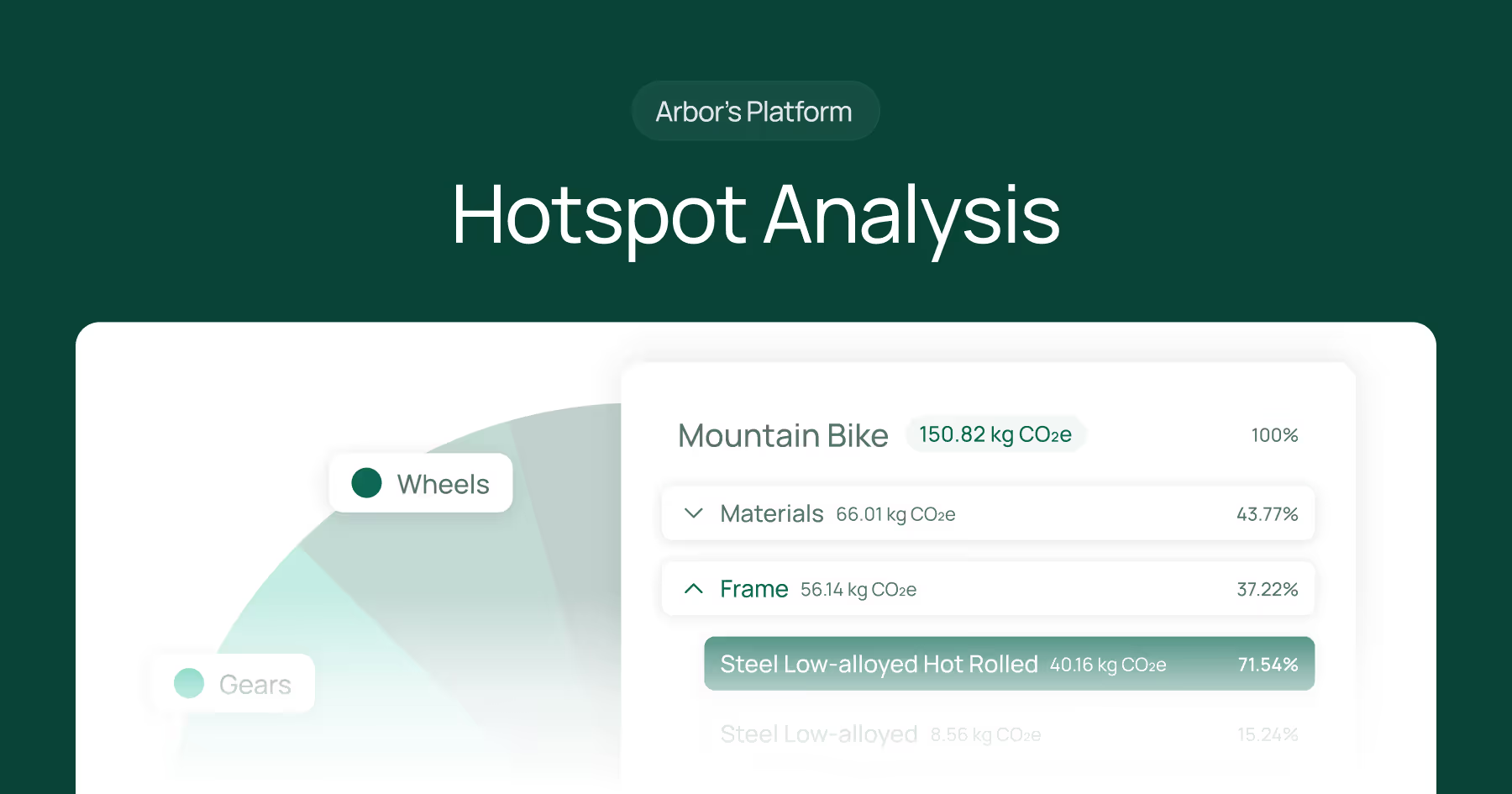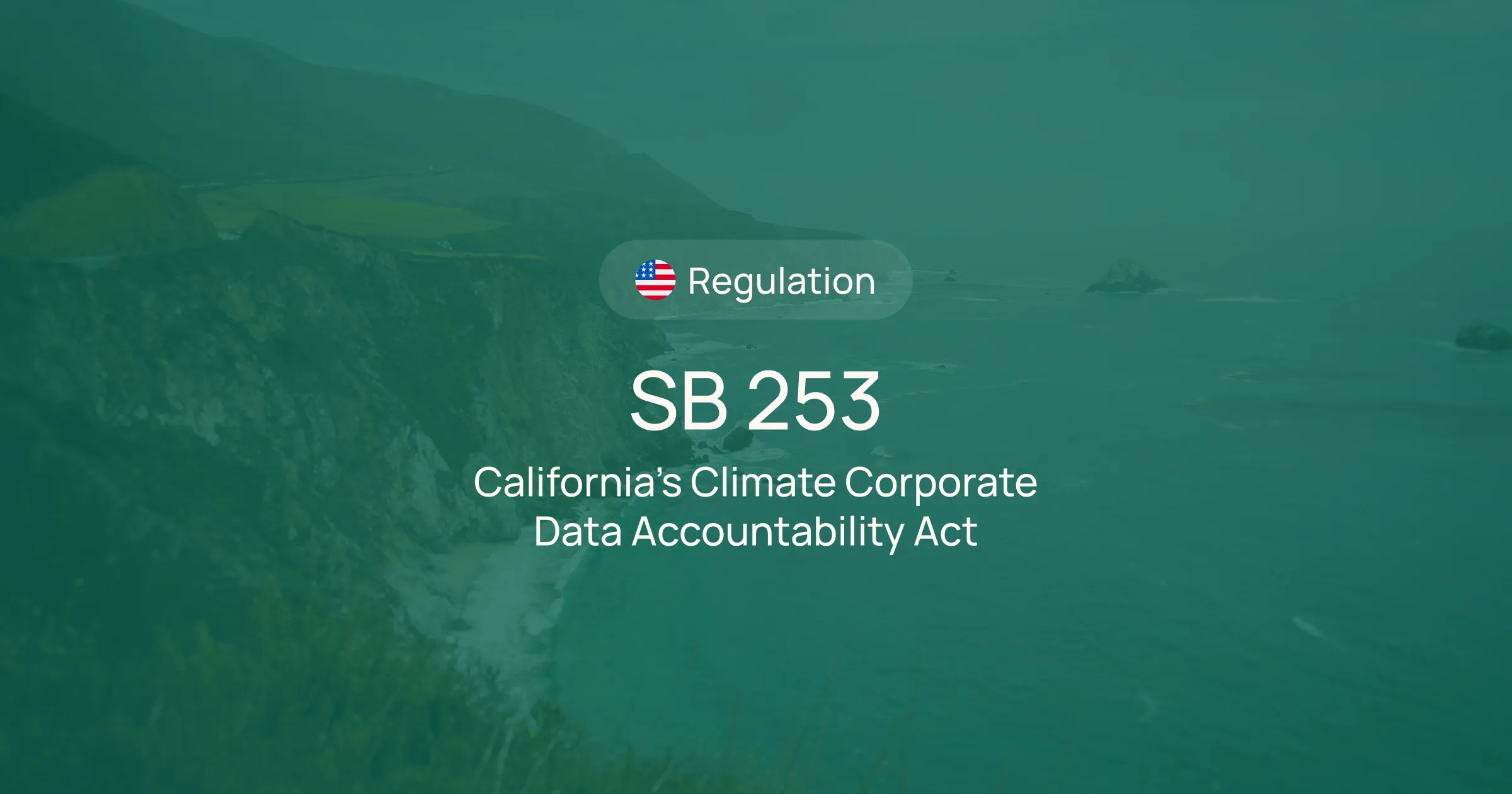Introduction
This FAQ collection, curated by Arbor, a leader in carbon calculation and PCAF standards application, aims to shed light on the intricacies of the Partnership for Carbon Accounting Financials (PCAF) for financial institutions. Given the evolving nature of greenhouse gas (GHG) accounting and the regulatory landscape, these answers serve as a guide rather than definitive solutions. Financial institutions face challenges such as data availability, regulatory compliance, and aligning financial activities with climate goals. This makes the understanding and application of PCAF standards crucial for effective climate action and risk management.
Arbor's expertise highlights the importance of continuous engagement with the latest in climate-related financial reporting and sustainability metrics. As the sector moves towards a low-carbon economy, adhering to PCAF standards is key to navigating climate-related risks and opportunities, emphasizing the need for diligence and best practices in GHG accounting and reporting.
As regulatory environments evolve and the urgency for climate action intensifies, PCAF's methodologies become increasingly indispensable. By providing a structured framework for measuring, reporting, and reducing the carbon footprint of financial portfolios, PCAF enables institutions to align their financial flows with global climate objectives. Enriched by Arbor's expertise, this guide aims to equip financial institutions with the knowledge and tools necessary to implement PCAF standards effectively. In doing so, it contributes to the collective efforts toward mitigating climate change and advancing the transition towards a sustainable, low-carbon economy.
General PCAF Questions

What is the Partnership for Carbon Accounting Financials (PCAF)?
The Partnership for Carbon Accounting Financials (PCAF) is an industry-led initiative that enables financial institutions globally to measure and disclose the greenhouse gas (GHG) emissions financed by their loans and investments. PCAF aims to enhance transparency and accountability within the financial sector by providing standardized methodologies for GHG accounting across various asset classes, facilitating the alignment of financial flows with the goals of the Paris Agreement.
Who does PCAF apply to?
The Partnership for Carbon Accounting Financials (PCAF) applies to various financial institutions worldwide. This includes banks, asset managers, insurance companies, pension funds, and other entities engaged in providing financial services. The initiative is designed to serve institutions of all sizes, from large multinational banks to smaller regional entities, with the goal of standardizing the measurement and reporting of greenhouse gas (GHG) emissions associated with their loans, investments, and underwriting activities. By participating in PCAF, these institutions commit to assessing and disclosing the carbon footprint of their portfolios, thereby contributing to global efforts to mitigate climate change.

Why was PCAF established?
PCAF was founded in response to the critical need for consistent and standardized greenhouse gas (GHG) accounting within the financial sector, particularly in light of the substantial investments in the fossil fuel sector post-Paris Climate Agreement. Despite global commitments to combat climate change, the largest banks have channelled more than $4.6 trillion into fossil fuels since the end of 2015, averaging $1.8 billion daily without a significant shift in investment patterns or a comprehensive assessment of the financed emissions' carbon impact.
This scenario underscores the financial industry's pivotal role in transitioning towards a net-zero carbon economy and highlights the urgent need for a framework like PCAF. By establishing a standardized approach for measuring and disclosing financed emissions, PCAF empowers financial institutions to evaluate climate-related risks accurately, align with global climate objectives, and take decisive steps toward decarbonization. This initiative aims to enhance transparency and accountability in the financial sector's environmental impact and to catalyze a shift in capital flow towards more sustainable investments, directly contributing to the collective efforts to mitigate climate change.
How does the PCAF scoring system work?
The PCAF data quality scoring system is designed to evaluate the reliability and quality of data used in calculating financed emissions. This system assigns scores on a scale from 1 to 5, where 1 represents the highest quality and reliability of data, and 5 denotes the lowest.

- Score 1 (Highest Quality): Emissions data is verified and calculated using primary data in strict accordance with the GHG Protocol. This involves using verified primary data emission factors multiplied by mass or energy consumption to ensure the utmost accuracy and reliability.
- Score 2 (High Quality): Emissions data is unverified but calculated using primary data following the GHG Protocol guidelines. The calculation uses primary data emission factors and energy consumption metrics to provide high-quality, albeit unverified, emissions estimates.
- Score 3 (Medium Quality): This category uses emission factors specific to primary data, where the emission factor is multiplied by the quantity consumed. It represents a medium level of data quality that relies on more general but still specific data sources.
- Score 4 (Low Quality): Emissions data in this category is based on category average data, utilizing category emission factors multiplied by revenue. This approach offers lower quality due to the generalized nature of the data used.
- Score 5 (Lowest Quality): This score is assigned to emissions data calculated using industry average data or competing data providers, marked by the lowest quality and reliability. It involves sector emission factors multiplied by revenue, providing the broadest and least precise emissions estimates.
PCAF's scoring system underscores the importance of data quality in accurately assessing and disclosing financed emissions, encouraging institutions to strive for higher-quality data to improve the reliability of their emissions reporting.
What is the methodology behind PCAF?
PCAF's methodology is grounded in the Greenhouse Gas (GHG) Protocol principles, specifically tailored to the financial sector. It provides a structured approach for financial institutions to calculate and report the GHG emissions linked to their lending and investment activities. This methodology encompasses various asset classes, including but not limited to listed equity and corporate bonds, business loans and unlisted equity, project finance, commercial real estate, mortgages, and motor vehicle loans. PCAF offers detailed guidance on data collection, emission factor application, and calculation methods for each asset class to ensure emissions are attributed accurately and consistently across the financial industry. The methodology emphasizes transparency, comparability, and data quality, facilitating institutions' journey toward aligning with global climate goals.
What are the 3 different standards within PCAF?
PCAF comprises three main standards:

Financed Emissions
This standard focuses on GHG emissions directly financed by financial institutions through their loans and investments. It provides detailed methodological guidance for measuring and disclosing GHG emissions associated with six main asset classes, with an additional method for sovereign debt and guidance for emission removals:
- Listed Equity and Corporate Bonds: Involves the measurement of emissions financed through investments in publicly traded equity and corporate bonds.
- Business Loans and Unlisted Equity: Covers emissions related to loans provided to businesses and investments in private companies.
- Project Finance: Pertains to emissions financed through loans or investments specifically designated for the funding of large-scale projects.
- Commercial Real Estate: Includes emissions financed through loans or investments in commercial properties.
- Mortgages: Encompasses residential mortgages, focusing on the emissions associated with financed residential properties.
- Motor Vehicle Loans: Covers emissions related to vehicle loans, focusing on the emissions of financed vehicles.
- Sovereign Debt: A new addition to the standard, covering emissions related to loans or investments in government bonds.

How does the PCAF standard affect financed emissions?
The PCAF standard provides financial institutions with a comprehensive framework to measure and report GHG emissions from their financed activities across various asset classes. By adopting PCAF's standardized methodologies, institutions can systematically assess the impact of emissions on their portfolios, enabling them to identify high-emission sectors or projects and make informed decisions to reduce their carbon footprint. This approach not only aids in transparency and accountability but also supports institutions in aligning their financing activities with the Paris Agreement's objectives. Furthermore, PCAF's emphasis on high-quality and reliable data empowers financial institutions to set and track progress toward science-based emission reduction targets, contributing to the broader transition to a low-carbon economy.
Through these mechanisms, PCAF significantly influences how financial institutions perceive and manage their climate-related risks and opportunities, fostering a culture of sustainability within the financial sector and driving investment toward more sustainable economic activities.
Facilitated Emissions
This standard covers emissions associated with financial institutions' capital market facilitation activities, specifically:
- Facilitated Issuance of New:
- Public debt (all types of bonds issued for general purposes, including sustainability-linked bonds, corporate bonds, and corporate medium-term notes)
- Public equity (common stock for IPOs and follow-on issuances, and preferred shares)
- Facilitated Equity Investments in Private Companies (including private placements)
- Facilitated Debt Investments in Private Companies (including private credit)
- Syndicated Loans
Exclusions from this standard include sovereign bonds, securitized products (such as asset-backed securities), covered bonds, derivative financial products (e.g., futures, options, swaps), and advisory services like mergers and acquisitions (M&A). Notably, green bonds are also currently excluded due to the absence of a PCAF method for calculating emissions associated with green bonds and other known uses of proceeds bonds.
Insurance-Associated Emissions
This standard focuses on GHG emissions related to re/insurance underwriting activities, aiming to account for and disclose emissions associated with the insurance products they provide. It specifically addresses:
- Commercial Lines: This includes all forms of commercial insurance products.
- Personal Motor Lines: Covers emissions related to personal vehicle insurance.

The standard provides detailed methodologies for calculating insurance-associated emissions for these segments, ensuring that emissions are accounted for based on robust, consistent accounting rules specific to each segment. The objective is for re/insurers to accurately measure GHG emissions for each segment and produce consistent, comparable, reliable, and clear disclosures. It emphasizes the challenge of limited data in calculating insurance-associated emissions but encourages re/insurers to embark on their GHG accounting journeys despite these limitations. The standard also offers guidance on data quality scoring per segment to facilitate data transparency and encourage improvements to data quality over time.
How does PCAF align with other reporting initiatives such as the Science-Based Targets initiative, Carbon Disclosure Project, Global Reporting Initiative, UN Principles for Responsible Investment, and EU Taxonomy and Sustainable Finance Disclosure Regulation?
The Partnership for Carbon Accounting Financials (PCAF) is intricately aligned with key sustainability and environmental reporting frameworks. This alignment enhances the efficiency and coherence of reporting across various platforms for financial institutions. Here’s how PCAF integrates with each initiative:
1. Science-Based Targets Initiative (SBTi)
PCAF provides essential tools that help financial institutions set and adhere to science-based targets for reducing greenhouse gas (GHG) emissions. By using PCAF’s methodologies, institutions can accurately quantify the emissions associated with their lending and investment portfolios, facilitating targeted action plans for emission reduction.
2. Carbon Disclosure Project (CDP)
PCAF complements the CDP framework, which emphasizes the importance of environmentally responsible disclosure including GHG emissions. Financial institutions leverage PCAF's standardized methods to calculate and report financed emissions effectively, aiding comprehensive disclosure through CDP.
3. Global Reporting Initiative (GRI)
The focus of PCAF on financed emissions introduces a nuanced angle to the sustainability reporting guidelines proposed by GRI. Institutions can seamlessly incorporate PCAF-generated data into their GRI reports, providing stakeholders with an expanded view of their environmental influence and management strategies.
4. UN Principles for Responsible Investment (PRI)
Supporting responsible investment principles, PCAF equips financial institutions with robust tools to measure and disclose emissions related to investment portfolios. This functionality plays a crucial role in supporting informed investment decisions that align with sustainability goals and principles advocated by the PRI.
5. EU Taxonomy and Sustainable Finance Disclosure Regulation (SFDR)
PCAF's standardized reporting approach is especially beneficial under the stringent requirements of the EU Taxonomy and SFDR. The methodology aids institutions in demonstrating the sustainability characteristics of their financial products, ensuring compliance and transparency in their financial offerings concerning environmental impact.
By aligning with these prominent initiatives, PCAF not only ensures the compatibility of its methodology but also streamlines the reporting process for financial institutions. This prevents redundant efforts and provides stakeholders with clear, comprehensive data that reflects the institutions' impact on the climate. Through such integrations, PCAF is setting a standard in financial environmental accountability.
How does PCAF differ from the Task Force on Climate-related Financial Disclosures (TCFD)?
The Task Force on Climate-related Financial Disclosures (TCFD)
Established in 2015 by the Financial Stability Board (FSB), the TCFD aims to guide a wide array of organizations, including companies across various sectors, in disclosing climate-related financial risks and opportunities. The core objective of the TCFD is to enable companies, investors, and financial institutions to align disclosures with investor needs and provide detailed information on how climate change could affect financial performance. This approach helps in better understanding and mitigating climate-related risks that could impact the global financial system.
The Partnership for Carbon Accounting Financials (PCAF)
In contrast, PCAF is narrowly tailored towards financial institutions. Its main focus is on the measurement and reporting of greenhouse gas emissions associated with loans, investments, and other financial services. PCAF equips financial institutions with standardized metrics to calculate and disclose emissions tied to their financing activities, which are pivotal in understanding the climate impact of their portfolios and guiding environmentally sustainable investments.
Summing up the Differences
- Scope of Application: TCFD caters to a broader set of organizations, while PCAF specifically targets financial institutions.
- Focus of Guidelines: TCFD is about assessing the financial implications of climate-related risks and opportunities, whereas PCAF homes in on the quantification and disclosure of financed emissions.
These distinctions highlight how PCAF complements the broader objectives of TCFD by providing tools necessary for financial institutions to account for and manage their climate impact more effectively.
Financial Institution-specific Questions about PCAF
How does PCAF impact financial institutions?
PCAF significantly impacts financial institutions by providing them with a standardized approach to measuring and reporting GHG emissions associated with their loans and investments. This enables them to understand their climate impact, manage climate-related risks, align with international climate commitments, and enhance stakeholder transparency.
What benefits do financial institutions gain from high PCAF scores?
Financial institutions with high PCAF data quality scores, indicating high-quality and reliable data use in calculating financed emissions, can expect several significant benefits. A high PCAF score (closer to 1) signifies that an institution is using verified and accurate data in accordance with the GHG Protocol for its GHG emissions calculations, reflecting a strong commitment to transparency and rigour in climate reporting.
The key benefits of high PCAF scores include:
- Enhanced Reputation: High PCAF scores demonstrate an institution's commitment to environmental responsibility and accurate reporting, enhancing its reputation among clients, investors, and regulators.
- Improved Risk Management: Using high-quality data for GHG accounting enables institutions to identify better, assess, and manage climate-related financial risks in their portfolios.
- Increased Transparency: High scores reflect a transparent approach to emissions accounting, building stakeholder trust and potentially leading to more favourable evaluations from rating agencies and investors.
- Strategic Alignment with Climate Goals: Reliable emissions data supports the alignment of financial portfolios with the goals of the Paris Agreement, facilitating strategic decisions toward financing low-carbon and sustainable projects.
- Competitive Advantage: Institutions with high PCAF scores may gain a competitive edge by showcasing leadership in climate accountability, attracting clients and investors interested in sustainable finance.
Overall, achieving high PCAF scores enables financial institutions to signal their dedication to climate action and sustainability, positioning them as leaders in transitioning to a net-zero economy.
How does PCAF guide financial institutions in quantifying and reporting GHG emissions?
PCAF guides financial institutions through the Global GHG Accounting and Reporting Standard for the Financial Industry, which helps assess and disclose the greenhouse gas (GHG) emissions from their loans and investments. This is achieved by providing a standardized GHG accounting approach, allowing institutions to make transparent climate disclosures, identify climate-related risks and opportunities, and set emission reduction targets aligned with the Paris Agreement. The standard encompasses methodologies for listed equity and corporate bonds, business loans, unlisted equity, project finance, commercial real estate, mortgages, and motor vehicle loans, ensuring emissions are attributed based on robust, consistent accounting rules specific to each asset class.
How does PCAF categorize GHG emissions for financial portfolios?
PCAF categorizes GHG emissions into three scopes in alignment with the GHG Protocol:
- Scope 1 emissions are direct emissions from owned or controlled sources.
- Scope 2 covers indirect emissions from the generation of purchased electricity, steam, heating, and cooling consumed by the reporting company.
- Scope 3 includes all other indirect emissions that occur in a company’s value chain, which, for financial institutions, primarily involves the emissions financed through their lending and investment activities.
PCAF focuses predominantly on Scope 3 emissions, enabling financial institutions to assess the emissions associated with their portfolios. This distinction helps accurately report and manage climate-related impacts and risks.
What reporting requirements does PCAF set for participating institutions?
PCAF sets comprehensive reporting requirements for participating institutions. These include disclosing the GHG emissions associated with their financing activities, providing a breakdown by asset class, and ensuring transparency regarding the methodologies used, data sources, and any assumptions made. Institutions must also adhere to a minimum disclosure threshold, with the flexibility to report beyond this level and explain any unmet requirements. This structured approach facilitates consistent, comparable, reliable, and clear emissions disclosures.
What are the challenges in implementing PCAF standards?
The primary challenge in implementing PCAF standards is data availability and quality limitations. Financial institutions may find it challenging to obtain accurate and comprehensive data for all financed activities, particularly for certain asset classes or sectors. Despite these challenges, PCAF encourages institutions to begin their GHG accounting journeys using estimated or proxy data to identify emission-intensive areas within their portfolios, promoting gradual improvements in data quality over time.
What are some of the emissions-related regulations affecting financial institutions?
Financial institutions are adapting to an increasingly stringent landscape shaped by voluntary frameworks and emerging regulations to enhance climate-related transparency and accountability. This evolving landscape includes:
- Bill B-15 (Canada): Targets enhancing transparency and accountability among financial institutions regarding their climate impacts, signifying a legislative push towards sustainable finance.
- Corporate Sustainability Reporting Directive (CSRD) (European Union): Mandates expanded sustainability reporting, requiring detailed disclosures on climate impact and sustainability practices.
- Securities and Exchange Commission (SEC) Proposal (USA): Aims to standardize climate-related disclosures, necessitating comprehensive reporting on greenhouse gas emissions, climate-related risks, and their management strategies.
These developments signify a global trend towards more detailed and rigorous climate and sustainability reporting requirements for financial institutions. The emphasis is on understanding and disclosing climate-related risks and opportunities and aligning financial flows with broader climate goals and sustainable development objectives. As the financial sector grapples with these expectations, it becomes evident that the industry's role is pivotal in driving the transition toward a sustainable and low-carbon global economy. This transition is supported by a mix of legislative efforts and the adoption of standardized reporting frameworks, marking a critical step forward in integrating sustainability into the core of financial decision-making and reporting practices.
The future of PCAF
The trajectory of the Partnership for Carbon Accounting Financials (PCAF) points towards a significant role in the future landscape of sustainability reporting, particularly as it aligns with the evolving standards of the International Sustainability Standards Board (ISSB). Before PCAF, the landscape of greenhouse gas (GHG) emissions reporting by financial institutions was markedly inconsistent. There was no standardized methodology for these institutions to measure and disclose their GHG emissions, a gap that PCAF has aimed to fill. Built on the foundations of the GHG Protocol, PCAF provides specific guidance that the GHG Protocol doesn't cover adequately, ensuring a more uniform approach to emissions reporting.
Additionally, the creation of PCAF aligned seamlessly with other international efforts to combat climate change, such as the Paris Agreement. This alignment underscores the global consensus on the urgent need for standardized environmental accountability and reporting. Moreover, there was a growing demand from stakeholders, including investors, regulators, and the public, for greater transparency and accountability regarding the environmental impact of financial institutions. These needs highlighted the critical role of standardized and detailed disclosures that PCAF seeks to promote.
From 2022, the ISSB is set to incorporate the Task Force on Climate-related Financial Disclosures (TCFD) into its framework, a move that underscores the integration of PCAF's methodologies within a global context that values transparency in financed emissions, especially Scope 3 emissions for financial institutions. This does not signify the obsolescence of TCFD's foundational principles. Instead, as ISSB assumes the mantle of monitoring progress, it builds upon the groundwork laid by TCFD. This strategic alignment highlights PCAF's contribution to climate-related financial disclosures. It marks a step towards a unified approach in sustainability reporting, as evidenced by TCFD’s reference in the Corporate Sustainability Reporting Directive (CSRD) and Bill C-15.
PCAF is on a path to refining its GHG accounting methodologies, with a keen focus on transition finance and green finance and addressing the dynamic nature of GHG inventories. The expansion of its methodologies to encompass a wider array of insurance products and securitized and structured products illustrates PCAF's adaptability to the changing demands of financial services in addressing environmental concerns.
Future explorations by PCAF into areas such as consumer finance products, derivatives, hedge funds, real estate's embodied carbon, and municipal bonds signal a proactive approach towards sustainability accounting. These endeavours are critical in ensuring that PCAF remains a pivotal tool in the financial sector's GHG emissions accounting and reporting toolkit. As PCAF continues to evolve in tandem with frameworks like TCFD and regulations such as the CSRD and Bill C-15, its influence in shaping a financially sustainable future that aligns with global climate goals is increasingly evident.
Arbor x Canadian Lenders Association

This FAQ is a foundational guide to the Partnership for Carbon Accounting Financials (PCAF), enriched by Arbor's deep expertise in carbon calculation and its strategic partnership with the Canadian Lenders Association (CLA). It is designed to demystify PCAF standards, offering insights into their critical role in aligning financial activities with the global imperative to mitigate climate change. Through this collaboration, Arbor and the CLA aim to enhance the capacity of financial institutions to navigate the evolving landscape of sustainability regulations and reporting requirements, leveraging high-quality, quantifiable data for informed decision-making.
Arbor's commitment to utilizing precise data underscores the importance of transparency and accountability in financial environmental reporting. This approach not only aids institutions in reducing financing risks but also in identifying and seizing green investment opportunities. By simplifying the complex process of GHG emissions accounting, Arbor supports the financial sector's journey towards sustainable practices, fostering a culture of innovation and compliance that aligns with the overarching goals of the Paris Agreement.
In essence, this collaboration between Arbor and the CLA embodies a proactive step toward sustainable finance, highlighting the indispensable role of accurate data in driving the financial industry toward a more environmentally responsible future.
Want this PCAF Guide as a PDF? Download the PCAF Guide here
Need help with navigating PCAF?
Measure your carbon emissions with Arbor
Simple, easy carbon accounting.





.webp)











%20Arbor.avif)





%20Arbor.avif)


.avif)






%20Arbor%20Canada.avif)

.avif)
%20Arbor.avif)
.avif)






_.avif)
.avif)
%20Arbor.avif)




%20Software%20and%20Tools.avif)





.avif)
.avif)




%20EU%20Regulation.avif)












.avif)

%20Arbor.avif)









_%20_%20Carbon%20101.avif)







.avif)

.avif)
.avif)



.avif)








